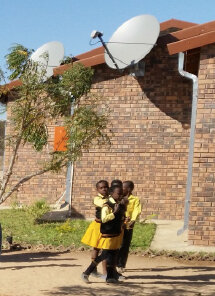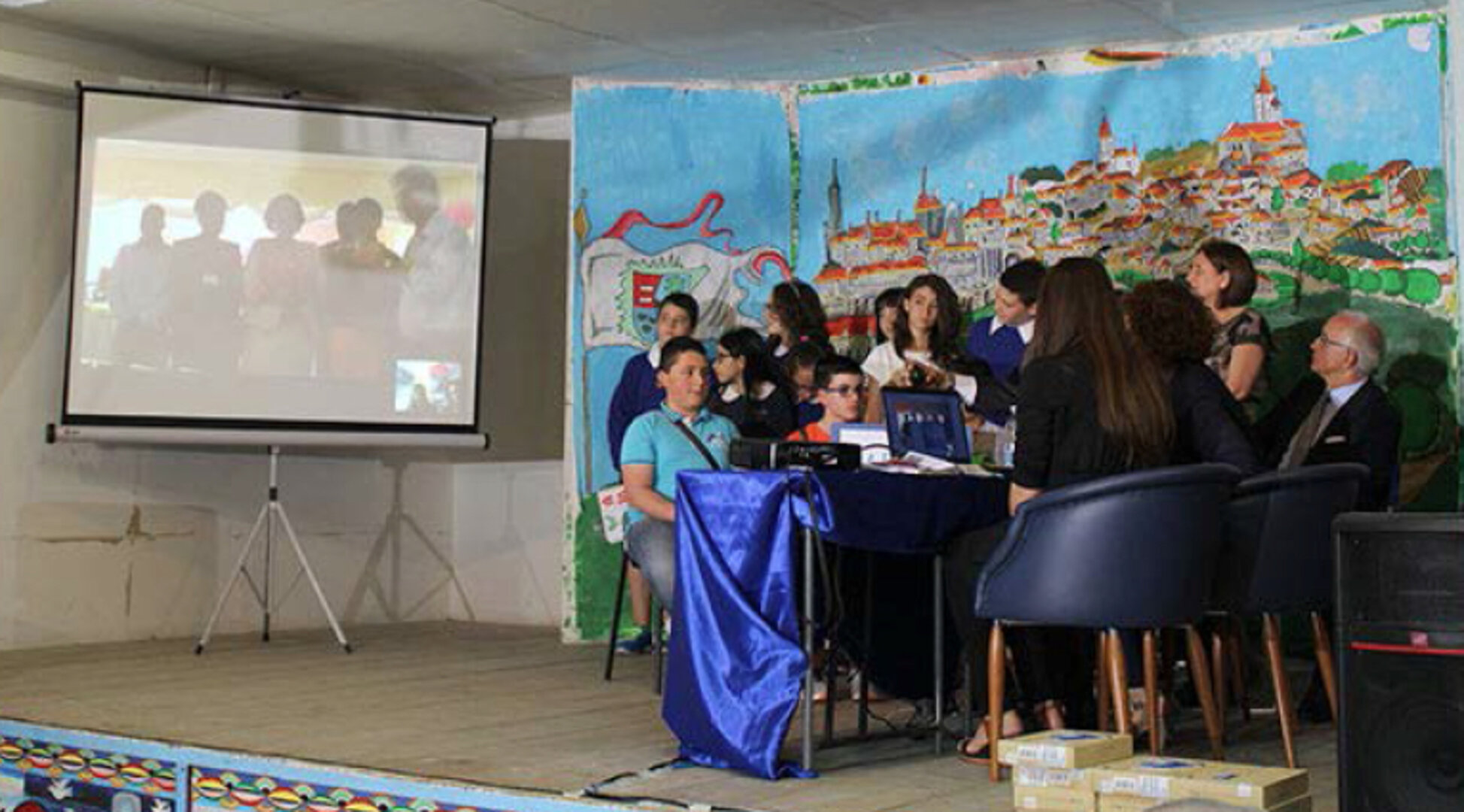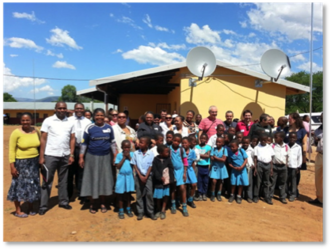Satcoms linking rural schools in South Africa and Italy
Teachers and students from rural schools in South Africa and Italy are benefiting from an ESA-supported project that enriches education through satcoms.
Twelve schools with 6500 students in the Mpumalanga region of South Africa and the 60-pupil Comprehensive School of Tricarico-Calciano in the Basilicata region of Italy faced similar disadvantages of having no Internet capability: few resources and limited access to information.
Sway4edu2, Satellite Way for Education, is improving this. ESA’s Advanced Research in Telecommunications Systems programme and Openet Technologies in partnership with Luxembourg’s satellite broadband operator SESTechcom Services are working together to close the digital divide.

Each school was equipped with satellite terminals, solar panels and batteries where needed, laptops, tablets, a projector with screen, and loudspeakers.
The setup provides Internet connectivity and access to eLearning for teachers and students, media content and other online monitoring tools and information.
The Singita Community Development foundation in South Africa is supervising the installation of the equipment, the provision of raw material for the online courses, and in collaboration with the Department of Education, the mentoring and training of 200 teachers in the effective use of the system.
The installation in the Basilicata region in Italy has the full backing of the Minister for Education, who sees the technology as a means of fostering cultural integration between schoolchildren and boosting language learning.

The first eLearning course for the South African teachers was released in March and a number completed the course to familiarise themselves with the technology and its benefits.
The system is also seen as a valuable tool for raising environmental awareness among rural communities. “One of the eLearning courses will assist teachers, and thereby their students, to foster awareness of the importance of preserving the local wildlife heritage, and of adopting a more sustainable approach to their own daily living,” said Pam Richardson, Singita’s Community Development Director.
“Game reserves across Africa are at risk and need the close collaboration of local communities to keep them safe. This course is seen as an important tool in achieving this.”

Two satellite video-conferencing connections were established during the launch event on 17 June.
The first was between the Tricarico-Calciano school in Italy and the Babati Primary School in South Africa, which are now ‘twinned’ for the project.
The second connection was with ESA’s Francesco Feliciani, at ESA’s ESTEC technical centre in the Netherlands, for a live lecture about the Rosetta comet probe.
Educational activities using the video facility between the schools will introduce the students to very culturally different environments.
“ESA is delighted to promote the creation of cultural bridges between schools,” said Francesco. “This is an exciting opportunity.”

Take-up of this technology is expected to gain momentum across Europe, bringing the same benefits to rural schools as enjoyed by their urban neighbours. “There are many areas that still do not have fast Internet connections. Satellite can offer an immediate solution,” commented Vito Gaudiano, CEO at Openet.
“This experience is a model of innovation,” added Raffaele Liberali, Minister of Education for the Basilicata region. “It is an example of what the Italian Ministry of Education aims to realise at national level in the near future. Tricarico today is at the vanguard of this pilot project.”

The Member of the Executive Council for Education of the Mpumalanga Province in South Africa, Mrs Makgabo Reginah Mhaule, was impressed by the live demonstrations at the launch.
With the benefits that satcom can bring to rural schools, she is keen for additional schools in Mpumalanga to have the same technology, and announced her department’s willingness to support the continuation of the service after the conclusion of the ESA project.
“All the partners and stakeholders agree that the selected satcom technology and the overall service model used by Sway4edu2 has proved to be reliable, easy to use and cost effective,” said Davide Tomassini, ESA’s project manager.
“The motivation, commitment and strong ownership of all the local partners has been key to the success of the Sway4edu2 trials,” commented Amnon Ginati, ESA’s Head of the Integrated and Telecommunications-related Applications Department.
“These services enable remote communities and can be used in the mornings to support teachers and students, in the afternoons to promote new teaching methods, and in the evenings to provide educational media and entertainment in the local language for the whole community.”
The service will now be offered to more rural schools in South Africa.
Sway4edu2 has built on the experience gained in the initial project of Sway4edu, and will be extending its service to local radios in rural regions of the Democratic Republic of Congo, with initial installations in September.
For further information, please contact:
Margherita Buoso
ESA Communication Officer for Telecommunications and Integrated Applications
Tel: +44 1235 444 293
Mob: +44 7557 503578
Email: margherita.buoso@esa.int






